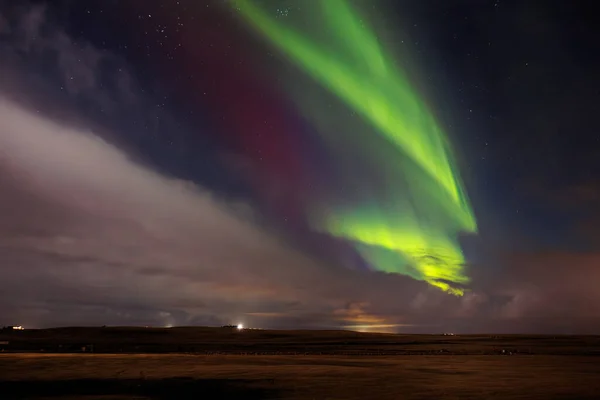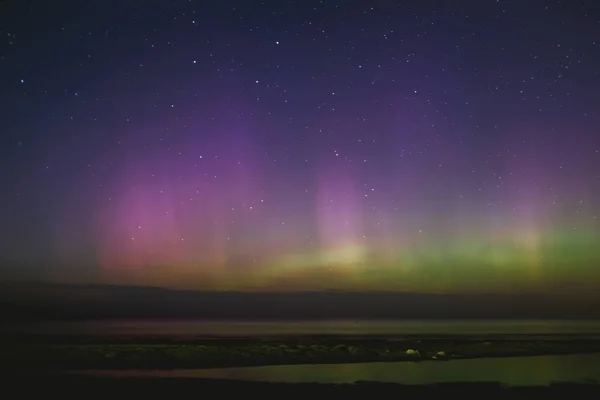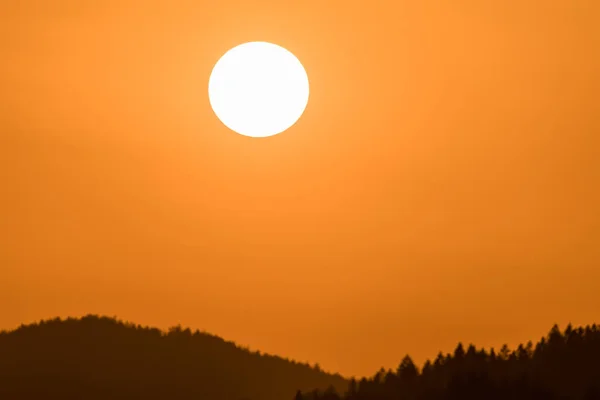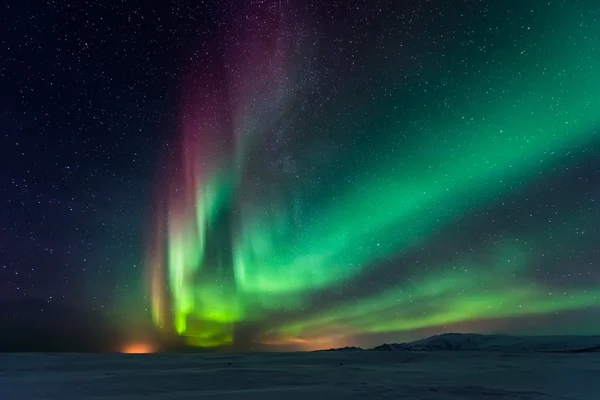
It’s not very often that the skies of Florida shimmer in hues of crimson, emerald, and purple. Yet this week, a powerful surge of solar energy pushed the northern lights far beyond their usual polar stage, dazzling states as far south as Texas, Alabama, Georgia, and Florida. The spectacular view is credited to a rare G4 “severe” geomagnetic storm-just one step below the most extreme rating-that began Tuesday and is expected to continue tonight, offering another chance for skywatchers to witness one of nature’s most captivating performances.

1. The Solar Storm Behind the Show
The event is driven by several coronal mass ejections huge clouds of charged particles and magnetic fields that get ejected from the sun’s outer atmosphere. For this, multiple eruptions merged into what scientists also refer to as a “cannibal CME,” which is a fast-moving plasma wave now colliding with Earth’s magnetosphere. Shawn Dahl of NOAA’s Space Weather Prediction Center explained that the magnetic field from these CMEs was “not only eight times stronger than what’s normal but is also favorable at the moment for continued activity.”

2. Why the Colors Dance
Auroras form when solar particles slam into Earth’s upper atmosphere at up to 45 million mph, exciting gas atoms and molecules. Colors depend on which gases are struck and at what altitude. Green-the most common hue-comes from oxygen molecules between 60 and 190 miles high. Red appears when oxygen is excited at higher altitudes, roughly 180 to 250 miles, and often crowns the display. Nitrogen collisions at lower altitudes create the rarer blues and purples, while pinks and yellows emerge from color blends during intense storms.

3. Best Viewing Locations Tonight
Forecasters are expecting the most robust activity from northern New England into the Great Lakes, upper Midwest, and Pacific Northwest. Areas that could see the clearest skies are from the Dakotas to northern Minnesota, Wisconsin, and Michigan. Cloud cover may interfere with viewing in parts of New England, upstate New York and the Northwest. Since the most energetic CME is forecast to arrive at midday, auroras could push farther south again if everything comes together.

4. Capturing the Moment
You don’t need very special equipment to photograph an aurora. A simple DSLR camera, or even a recent smartphone, works well if it can be set to manual mode. Use a tripod to eliminate blur, use long exposures of 5-15 seconds, and set ISO between 800 and 3200, depending on brightness. A wide-angle lens will take in more of the sky, and turning off flash ensures that the camera only captures the natural light. Many photographers recommend making use of the night mode on your phone to detect faint auroras before they’re visible to the naked eye.

5. A History of Southern Sightings
Auroras this far south are rare but not unprecedented. Historical records describe extreme events like the 1859 Carrington Event, when telegraph wires sparked and auroras were seen in the Caribbean. More recently, a May 2024 storm disrupted GPS systems across North America, costing Midwestern farmers an estimated $565 million in losses. These episodes underscore the aurora’s link to powerful solar activity-and its potential to affect modern life.

6. Possible Technological Impacts
While the majority of people will only see spectacular skies, G4 storms can cause voltage control problems in power grids, degrade GPS accuracy, and cause radio and satellite operations to be disrupted. Some errors or loss of signal from navigation systems could be experienced by farmers, pilots, and emergency services. NOAA warns that geomagnetically induced currents can overload transformers, while high-frequency radio blackouts have already been reported this week from Europe and Africa during the flare activity.

7. The Solar Cycle Connection
Earth is presently at the peak of Solar Cycle 25, a period of high sunspot activity that is foreseen to continue well into 2026. Solar maxima are associated with more frequent and powerful flares and CMEs, which can cause dramatic auroras. The X5.1-class flare that took place on November 11th was the strongest flare in 2025, part of an “extraordinary week” of solar events that scientists say may be far from over.

8. Tips for Aurora Chasers
For optimal viewing, go to a dark, north-facing location as far away as possible from city lights. Allow eyes to adjust to the dark for at least 30 minutes, dress warmly, and monitor real-time aurora forecasts from NOAA or apps like “My Aurora Forecast & Alerts”. Keep cameras at the ready-auroras can pop into view suddenly and fade within minutes.

The skies tonight may not glow over Florida again, but for the northern half of the country, the dance of solar particles and atmospheric gases promises a rare, vivid reminder of the sun’s reach and Earth’s beauty.


